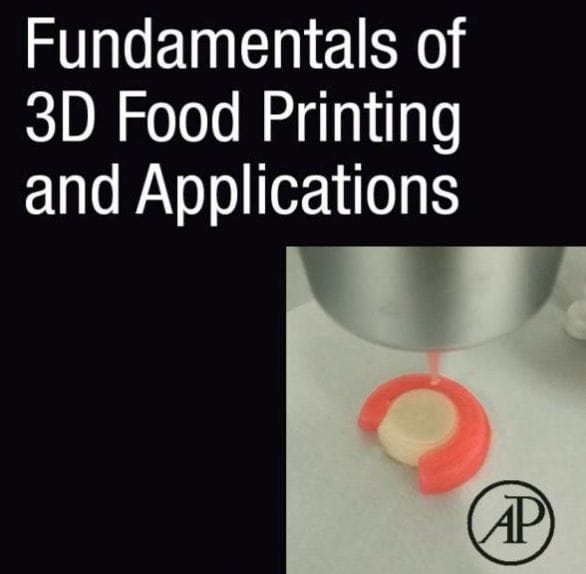![Fundamentals of 3D Food Printing and Applications [Source: Amazon]](https://fabbaloo.com/wp-content/uploads/2020/05/image-asset_img_5eb093362fbfe.jpg)
This week’s selection is “Fundamentals of 3D Food Printing and Applications” by Fernanda C. Godoi, Bhesh R. Bhandari, Sangeeta Prakash and Min Zhang.
Food 3D printing is a subject that is quite paradoxical. While it is rarely performed and there are fewer food 3D printers available than you have fingers on two hands, it is also a subject of great interest.
In fact, one of the very first questions I am always asked when people learn I know something about 3D printing is whether they can 3D print their dinner. At least, that’s after they ask “how big you can print”. There’s a lot of interest, and perhaps it is because the preparation of food is a labor that everyone must endure. The magic of 3D printing might be a way to avoid that work.
Alas, it has not come to pass, at least not yet. This is in spite of a significant amount of work done by multiple individuals and researchers on the topic. The biggest barriers I see are:
Time Required To 3D Print Food
Like all 3D printing processes, 3D printing food is a tedious process. Extrusion-based 3D printing takes hours and sometimes days to produce objects. These huge delays imply that 3D printed food might never become a kitchen process that’s commonly used for hungry people. Instead, it suggests that food printing be used only “in advance” where time is not an issue.
Ingredients Available For 3D Food Printing
Virtually all 3D printers designed to work with food have an extremely limited number of ingredients. In fact, most devices can print with only one at a time. This is quite catastrophic for almost every food dish you might imagine, and suggests that the technology could be used only for “add ons” to other dishes prepared traditionally.
Software To Design 3D Prints of Food
There are many 3D CAD systems available, but I am unaware of any that specialize in food design. This is a critical aspect because food has very different structural properties and thus the object’s geometry must be handled in different ways. I don’t believe any software exists to do this.
Purpose of 3D Printed Food
The costs of 3D printed food must ultimately be competitive with traditional techniques, otherwise it will never gain widespread appeal.
Food 3D Printing Fundamentals
This book covers a lot of the technical details behind these issues.
After the obligatory “how does 3D printing work” section, the authors dig into the details of different aspects of 3D printed food, including:
-
How different 3D printing processes affect food structures
-
Using CAD systems to design food structures
-
How print job settings can affect different food structures when printed
-
Everything you’d ever want to know about 3D printing dough
-
Steps required to 3D print fruit and vegetables
-
An entire chapter on 3D printed chocolate, perhaps the number one food printing ingredient today
-
3D printing of dairy products, including cheese
-
Ideas on how to create viable food 3D printing businesses
-
Using Binder Jet processes
-
Consumer and Prosumer-based food 3D printing
-
Safety and labeling concerns
This is as comprehensive a book on food 3D printing I’ve yet seen. If you have any interest in the topic, please consider this book.
Via Amazon











A Spanish company hopes to develop a specialized 3D printer that is capable of producing vegetarian steaks that both taste good and have great texture. But will you eat one?